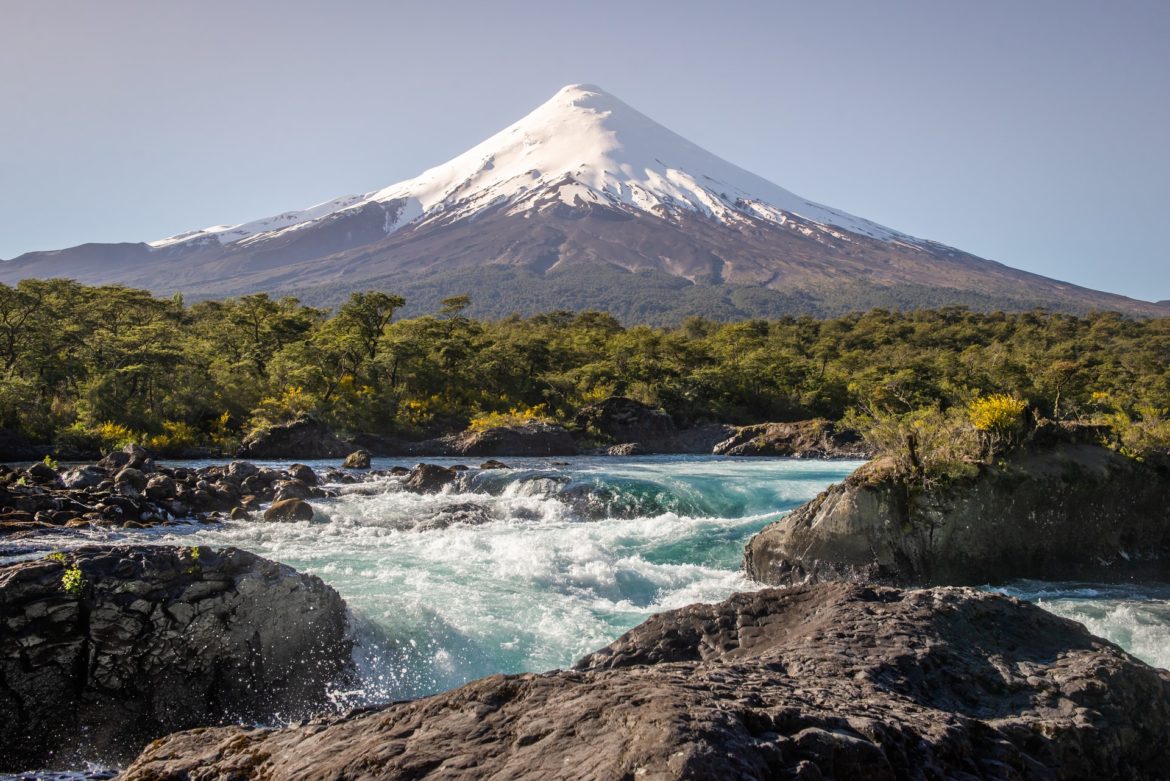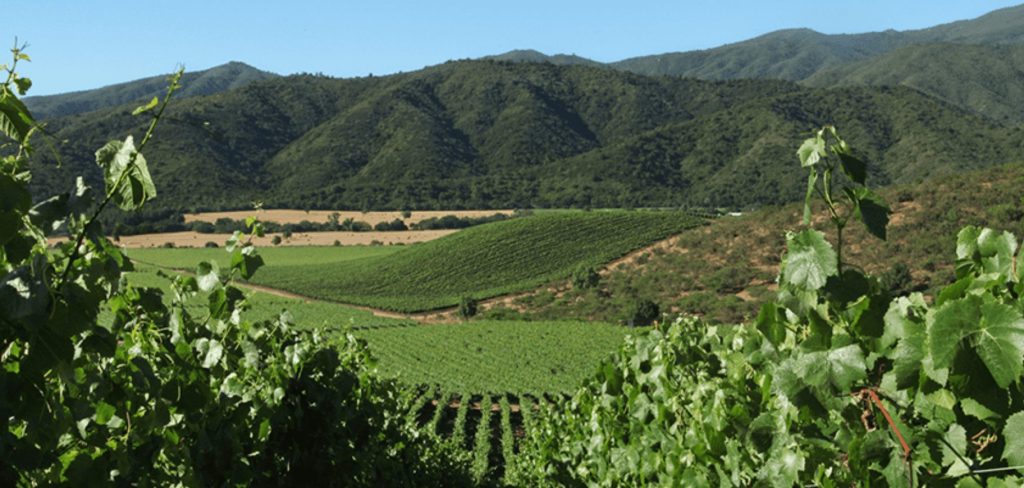The wines of Chile have a lot of ground to cover at the moment, both in terms of style and location. There are incredible troves of old vines, ranging from the southern hills of Itata up to the desert oases on the border of Peru, while new vines are popping up all over the country, from the lime-encrusted river terraces of Limari to the volcanic slopes of Pucon volcano.
Although Wines of Chile’s trade tastings this year have been largely disrupted by the pandemic, the organisation put together a special tasting for the Circle of Wine Writers and Association of Wine Educators, to give a whirlwind tour of Chile, some of the key themes of which I thought were worth sharing here too:
A red tide: Chile’s coastal red wines
Chile’s coastal regions featured with a focus on red wines, proving that they are stepping into the arena with much more than just Sauvignon Blanc (although a good value Casas del Bosque Sauvignon Blanc Reserva proved that this grape variety is still Casablanca’s calling card). The focus was, in fact, on Pinot Noir and Syrah. From the full-bodied, voluptuous Ocio Pinot Noir of Cono Sur to the linear and fresh Lot 21 Pinot Noir of Viña Leyda, these two wines showed different faces to Casablanca and San Antonio’s Pinot Noir, and also the potential of blending terroirs in the case of Ocio.
“When we blend Pinot Noir together from both Casablanca and San Antonio, we can have this much bigger dimension of Pinot Noir,” explains Cono Sur winemaker Matías Ríos. “From Casablanca, where we have the oldest coastal vines, we have a much more voluptuous and bold character of Pinot Noir, and if you combine it with the vibrant acidity we get from the granitic soils of San Antonio, which is like a young horse with lots of power, you can get a very full wine. The fingerprint of coastal Chilean Pinot Noir is this combination of the delicacy of the variety with the cool climate of the Pacific Ocean, with full complexity on the palate and ripe tannins from all our abundant sunshine.”
In coastal Syrah, the tasting took us to the very cool climate of Lo Abarca where Casa Marin produces its bracing, meaty and mineral Miramar Syrah just a couple of kilometres from the coast; and to Limari in the north where Viña Sutil produces its Limited Release Syrah on the limestone soils of this northern coastal region.
Old vines making a comeback
There was also a look at the old vines and interesting blends being produced in Chile today. From Itata, Viña Morandé presented its Adventure Creole, a blend of Cinsault and País which was resplendent in crunchy red fruit aromas. From Maule, another País and Cinsault blend was shown, with 60% Carignan leading the blend this time, from Espíritu de Chile. These blends not only represent the renewed interest in some of Chile’s oldest vines and traditional regions and varieties, but also an effort from wineries to give more value to these grapevines, the fruit of which has been sold cheaply for decades, going to bulk wines.
“Now, we are trying to pay the right price for the right quality of these grapes,” said Espíritu de Chile winemaker Juan Ignacio Montt. “We also wanted to put the history of Chile into this blend, using traditional varieties for Chile.”
Looking at some of the traditional white grape varieties in Chile, Carmen winemaker Emily Faulconer presented an old-vine Semillon, which she makes in Apalta, Colchagua. “Apalta today has two realities which are very strong,” she said. “[One is] the modern viticulture from the last 30 years, but there’s [also] a contrasting very old viticulture that has been there for more than 60 years. The Quejada family [after which the wine is named] is part of that tradition — their old vineyards give very special wines.” Not only is the Viña Carmen Florillón special for its providence, but also because this is one of the first modern Chilean wines aged under a veil of flor, which adds a leaner, more textural element with more complex aromas — a highlight in Chile’s white wine scene today.
Bordeaux varieties redefined
Chile’s long-lasting love affair with Bordeaux varieties started in the 1850s with the arrival of Cabernet Sauvignon, Merlot and — although it wasn’t known at the time — Carmenère. The Wines of Chile tasting served to show an update on how these varieties are being redefined with new terroirs and precision viticulture. From the impressive blend of VIK in Cachapoal, to a youthful Carmenère from Tarapaca, and on to Viña Maquis’ cooler climate interpretation of Colchagua through its Gran Reserva blend. One of the most interesting for me was Aresti’s high altitude Merlot from Curicó, which showed a totally different side of this traditionally rather warm region. From a tiny vineyard planted high in the Andes mountains, the wine showed a mineral definition and freshness uncommon in Curicó wines, let alone Chilean Merlot.
Another exciting new wine came from the innovative winemaker of Santa Rita, Sebastian Labbe, who presented Chile’s most-planted variety, Cabernet Sauvignon, but with a new vision. “Cabernet Sauvignon has been our flagship variety for a long time, but most of the viticulture in Maipo is on the flat areas where the alluvial terraces are,” he explained. “In the 1990s, we started discovering the hills and colluvial soils of our estate.” The 2018 Floresta Cabernet Sauvignon comes from 750 m.a.s.l. and, as he explained, “this changes the conditions and wine a lot… the tannins have more grip and the fruit has more tension.”
Another wine revealed in the tasting was Valdivieso’s Caballo Loco — a non-vintage blend which has around 10 varieties in the blend, although no-one really knows what they are. Each edition is completely different than previous ones (we were tasting Number 17), but there’s usually an important component of Cabernet Sauvignon, Merlot and Carmenère. As a non-vintage blend, each year a base wine of the old vintage has the latest vintage added, and sometimes the range looks at different regions. The wine is quirky, but what I love about it is that it shows the wilder, more playful side of Valdivieso, which is otherwise a very traditional winery. Caballo Loco was an early ‘icon’ of Chile and it embodies the more creative spirit coming out of Chile’s winemakers today. “The number 1 objective of Caballo Loco is to keep everyone really confused!” joked winemaker Brett Jackson.
Rather than causing any confusion, I think this whirlwind tour made it precisely clear that Chile’s wine industry is covering new ground at a momentous rate — taking on new regions, new wine styles and new concepts, and making them commercially available at lightning-speed. The one wine that wasn’t yet commercially available was Viña San Pedro’s Tayu 1865 Pinot Noir from Malleco, although it is a fascinating project to get to grips with: a new vineyard planted in the south as part of a social project to involve the local Mapuche community in vine growing and create a sustainable business model for the future. It’s a noble ambition and a much-needed one as native communities are still on the sidelines of Chile’s wine industry. The wine itself — a fragrant and herbal Pinot Noir — was very promising, and hopefully it’s a model which can encourage similar initiatives elsewhere soon.
There’s so much to be discovered in Chile today, and it’s hard to cover much ground in a few hours, and also tricky managing it all online. However, this Wines of Chile tasting covered some of the most exciting regions, wines and tendencies in Chile today — a country that is unarguably one of the wine world’s most diverse.

